Signed: A. Gilbert, 20th century Art Deco artist, referenced and highly sought-after,
The artwork: Pierrot with a Mandolin
Dimensions: Height: 22 cm, Width: 31 cm, Depth: 18 cm
Sold with Invoice and Certificate.
Biography:
Alfred Gilbert 1854/1934
Alfred Gilbert, born in London on August 12, 1854, and died on November 4, 1934, was an English sculptor and goldsmith.
His works are marked by innovations in metallurgy. He played a central role in New Sculpture, an artistic movement that revived sculpture in Great Britain in the late 19th century. Alfred Gilbert also enriched sculpture with the thematic and stylistic particularities of the Art Nouveau movement.
Alfred Gilbert's parents, Charlotte Cole and Alfred Gilbert, were both musicians and lived in London when he was born. He received his primary education in Paris at the École nationale supérieure des beaux-arts, where he studied under Jules Cavelier. He then studied in Rome and Florence, Italy, where Renaissance art profoundly influenced his future work, particularly the large Florentine Mannerist bronzes. He also worked in the studio of sculptor Joseph Boehm and was influenced by the latter's assistant, Édouard Lanteri (1848-1917).
On January 3, 1876, he married one of his cousins, Alice Jane Gilbert (1847-1916), with whom he had moved to Paris. They had five children together.
Gilbert joined the Royal Academy in London in 1887 and became a full member in 1892, before resigning in 1909. He served as professor of sculpture there until 1900. In 1889, he won the Grand Prize at the Universal Exhibition in Paris, and he was appointed a Member of the Royal Victorian Order in 1897. He later became a member of the International Society of Sculptors, Painters and Gravers.
Having encountered significant financial difficulties, he became bankrupt and was forced to leave the United Kingdom in 1901. He lived for the next twenty-five years in Bruges, Belgium. His wife left him in 1904 and was placed in a psychiatric hospital, but they never divorced.
After his wife's death in 1916, Alfred Gilbert married his housekeeper, Stéphanie Debourgh (1863-1937), on March 1, 1919. Six of Gilbert's seven children lived with her until 1907 and then during the First World War and the German occupation.
Gilbert traveled to Rome in 1923 and, three years later, returned to England to complete the Clarence Memorial, this time under royal patronage. He also designed the Monument to Queen Alexandra, unveiled in London in 1932. Gilbert was knighted on this occasion and re-elected to the Royal Academy. During his later years, he achieved recognition in the highest spheres of British artistic society before his death in 1934.
His first major works were sculptures such as Mother and Child, then Victory's Kiss, followed by Perseus Arming Himself (1906), all clearly influenced by the sculptures he studied in Florence. His success was considerable, and the sculptor Frederic Leighton immediately commissioned an Icarus, which was exhibited at the Royal Academy in 1884, receiving widespread acclaim. He subsequently completed The Enchanted Armchair, which he later destroyed, as he did several of his works that he considered unfinished or unworthy of his talent. The following year, Gilbert devoted himself to the creation of the Shaftesbury Memorial Fountain in Piccadilly Circus, London, a work of great originality and beauty depicting Anteros.
In 1887, he created the Monument to Queen Victoria's Golden Jubilee, installed in Winchester, whose fine and detailed ornamentation makes it one of the most remarkable sculptures of this style in Great Britain. Other sculptures of great beauty, both in their conception and the delicacy of their treatment, include the Monument to Lord Reay in Bombay and the Monument to John Howard in Bedford (1898), whose highly original base did much to reorient the previously rather eccentric works of Art Nouveau artists.
A sense of decoration is paramount throughout Gilbert's work. This delicate style is found, in addition to the works already mentioned, in the busts of Cyril Flower, John R. Clayton (destroyed by the artist), George Frederic Watts, Henry Tate, George Birdwood, Richard Owen, George Grove, and many others. However, his reputation as an artist rests primarily on his goldsmith work, with creations such as the Mayor of Preston's necklace, the centerpiece for Queen Victoria, the figures of Victory (a statuette designed for the Winchester statue), as well as a large number of smaller objects, such as seals, keys, etc.
Although primarily known for his sculptures, Gilbert also produced some oil paintings, with a particular fondness for still life.
Source: Bénézit
Sold with invoice and certificate.
Sculpture on display at our gallery in L'Isle-sur-la-Sorgue (France), on weekends.
Free shipping within France.
International orders upon request.

















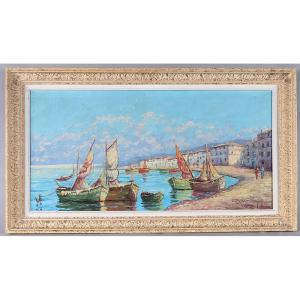


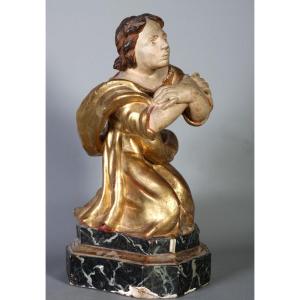



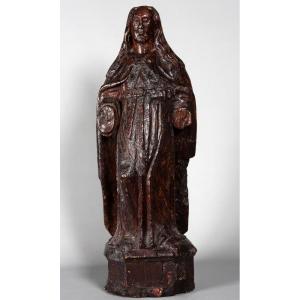

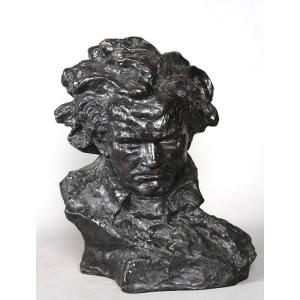


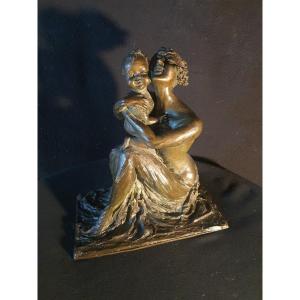






 Le Magazine de PROANTIC
Le Magazine de PROANTIC TRÉSORS Magazine
TRÉSORS Magazine Rivista Artiquariato
Rivista Artiquariato